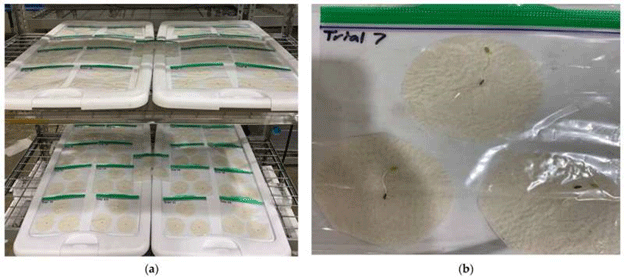Urban agriculture is on the brink of a significant transformation, with new research highlighting the potential of wastewater as a growth medium for hydroponic systems. A groundbreaking study from the University of Illinois Urbana-Champaign investigates the feasibility of using effluent from aquaponic systems combined with hydrothermal liquefaction (HTL) wastewater to cultivate lettuce in a hydroponic setup. This approach promises to enhance sustainability and create a circular ecosystem for organic waste recycling.
Hydroponics, which allows plants to grow in nutrient-rich solutions without soil, has already demonstrated its capacity to boost food production in urban settings. Aquaponics takes this a step further by integrating fish farming with hydroponics, utilizing fish waste as a natural fertilizer. The recent study extends this concept by exploring the use of HTL-AP, a byproduct of hydrothermal liquefaction technology, which converts wet biomass into biocrude oil. HTL-AP, rich in nutrients, could serve as a valuable fertilizer in hydroponic systems.
Lead author Liam Reynolds and his team conducted experiments using Buttercrunch lettuce seeds to test various wastewater mixtures. They explored combinations of HTL-AP with aquaponics effluent and compared these with standard hydroponic fertilizers and deionized water. The study revealed that solutions containing up to 8% HTL-AP supported lettuce seed germination effectively, marking a significant advancement over previous research.
While earlier studies indicated that treated wastewater could be used for hydroponic growth, this research suggests that higher concentrations of HTL-AP can be utilized without hindering seed germination. The potential for using aquaponic effluents to supplement or even replace traditional fertilizers opens new avenues for urban agriculture, potentially reducing reliance on chemical fertilizers and minimizing environmental impact.
However, the study also underscores the need for further research to address potential issues such as toxic compounds and heavy metals in wastewater. Ensuring the safety and effectiveness of these alternative nutrients is crucial for their broader adoption.
In conclusion, the integration of aquaponics wastewater and HTL byproducts into hydroponic systems represents a promising step toward more sustainable urban agriculture. By turning waste into a valuable resource, this approach not only enhances food security but also supports a circular economy in agricultural practices.










